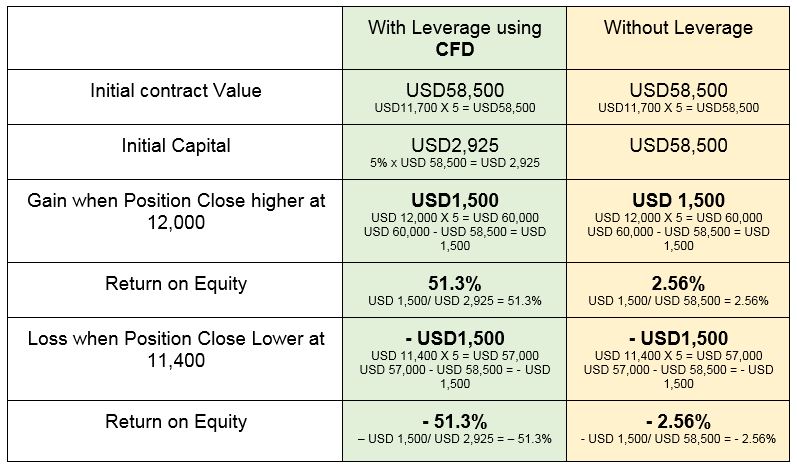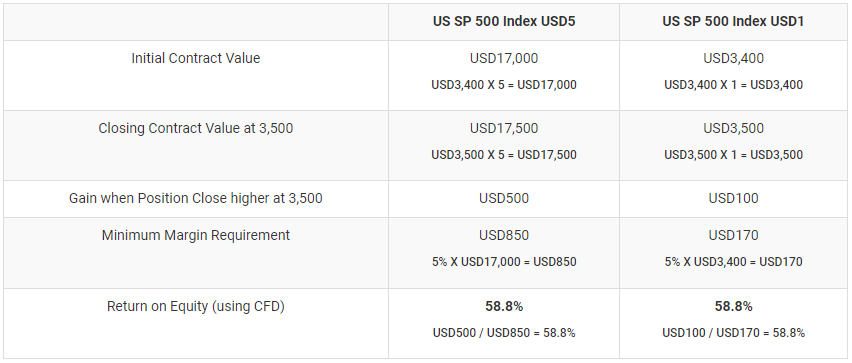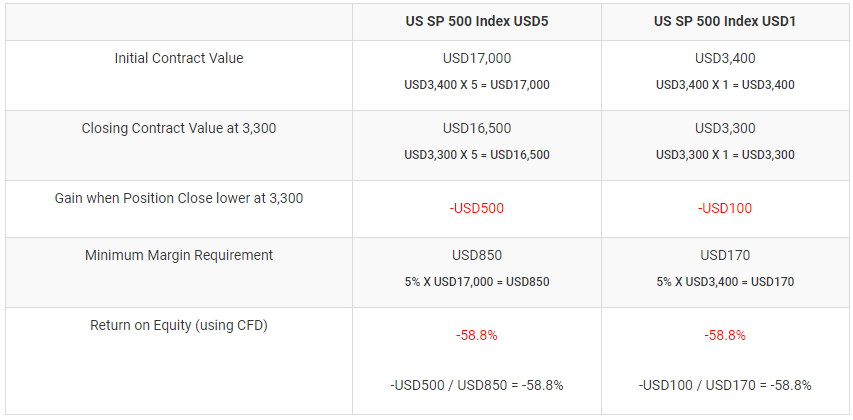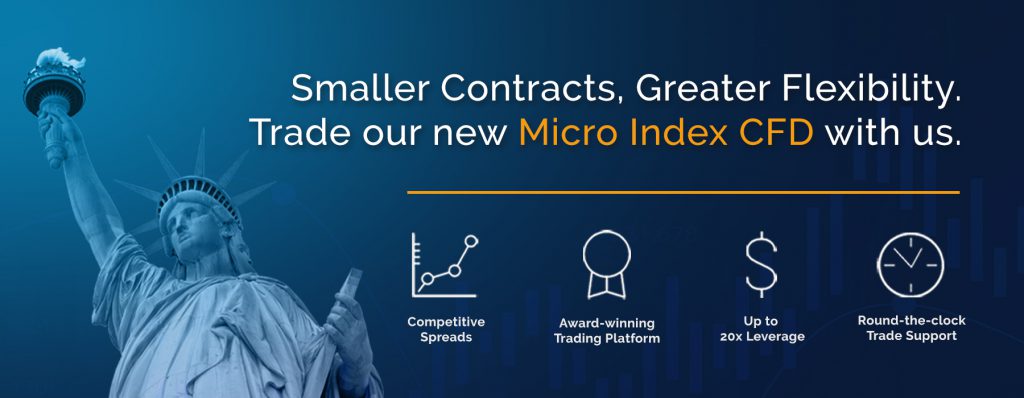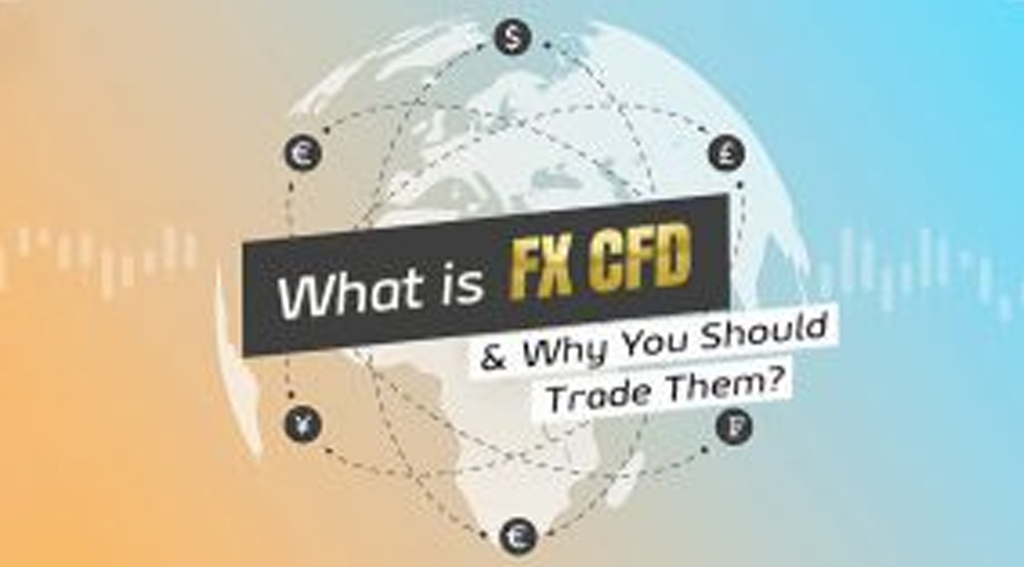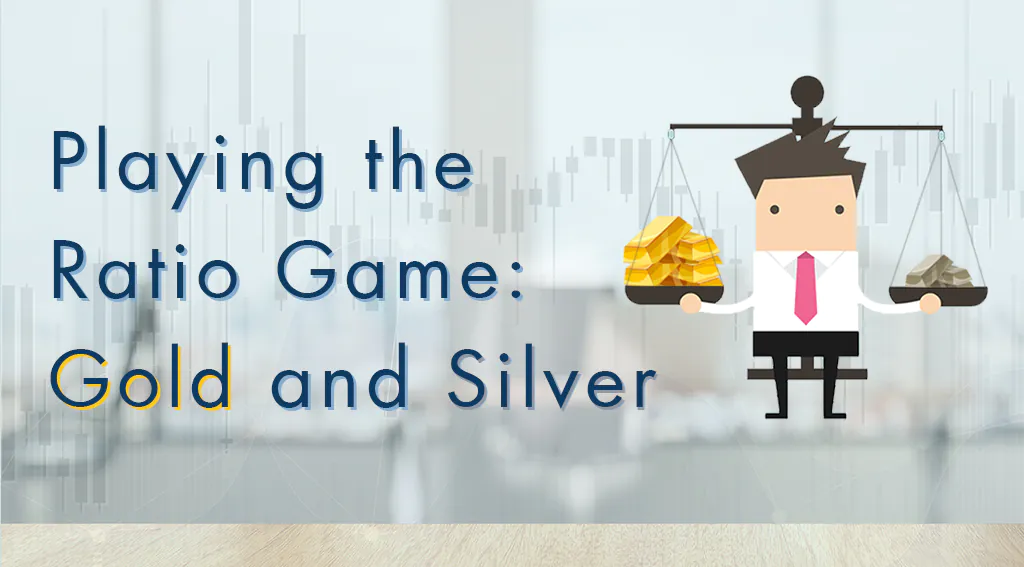What is an Index and why you should consider Indices CFD!
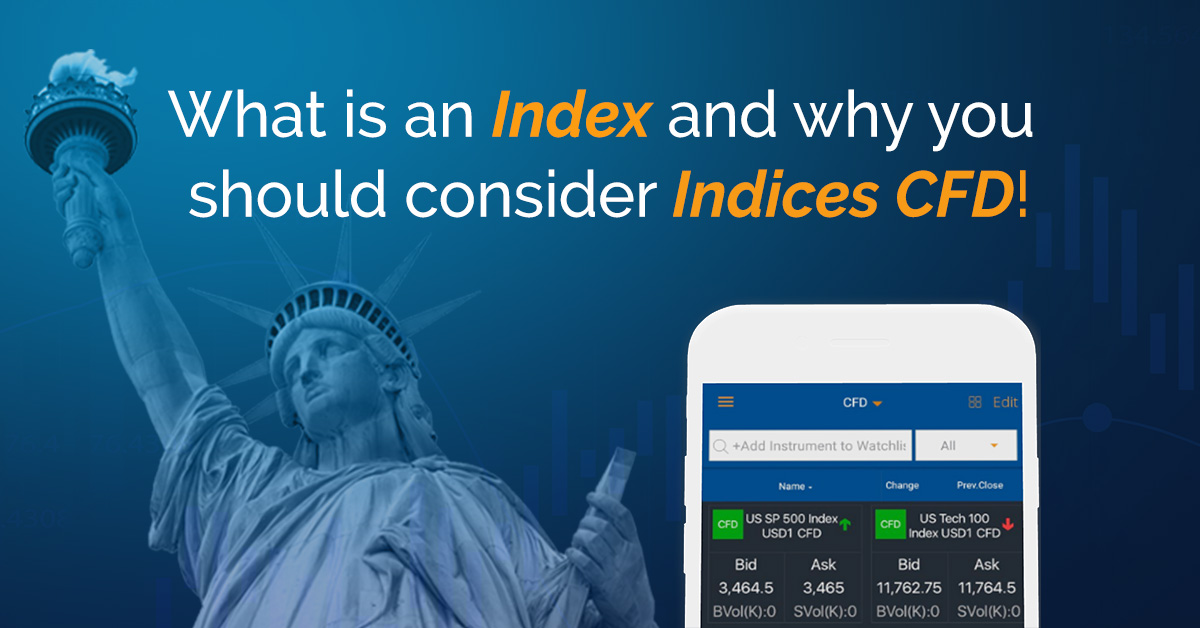
Published On: 12 October 2020 | 5:00 PM
Updated On: 25 July 2022 by Elston Xavier Soares
Jason Chua, Dealer
Jason Chua graduated from Singapore Institute of Management (University of London) with a Bachelor’s Degree in Banking and Finance. He has experience working as a proprietary trader and banker before joining Phillip Securities.
Index CFDs are a popular alternative to trading individual stocks, index futures or Exchange-Traded Funds (ETFs), because the instruments allow you to gain exposure portfolio to a particular index and benefit from the price action of the counter, regardless of long or short. In addition, traders are only required to put up a fraction of the contract value as collateral to initial a contract due to the leverage feature of CFD. This allows traders to trade the overall market quickly and conveniently.
Key Takeaways
- A stock index is simply a collection of assets that provide an overview of how a sector of the stock market is performing. Many of such indices include and/or exclude some stocks based on different criteria.
- Index CFDs help to diversify your portfolio with the wide variety of stocks that constitute a single index. This also helps to avoid the Paradox of Choice: the index helps you to make decisions on which stocks to invest in
- Most importantly, index CFDs let traders gain exposure to the index in lieu of buying individual stocks that make it up. This cost-efficient strategy allows you to trade only the change in price(s) of the index, without having to own the underlying index itself.
What is a Stock Index?
It can be quite odd when people say “The market has gone up today” or “The market is falling”. How do analysts evaluate the market as a whole?
It’s easy – Simply add and compare the sums of money required to buy all the companies at the prices quoted today and yesterday. If today’s figure is greater than that of the day before, then we know that the market has gone up today and vice versa. However, the summation and comparison of numbers can be tedious and troublesome. This brings about the creation of a tool of measurement called the Index.
A Stock Index is simply a collection of stocks (or other assets) that provides an overview of how a specific part of the stock market is performing. Through the use of the Index as a proxy, we can derive whether the market has gone up or down today.
I am sure a good number of you would have heard of some of the major indices, such as the S&P 500 and the Dow Jones Industrial Average (DJIA), which are commonly reported in the news. While most recognise the major indices and some may even have related trading experience, one common misunderstanding is that indices are traded like individual stocks. The truth is, stocks indices are not tradeable directly. However, there are other ways for you to replicate the performance of the index, such as purchasing Index Fund or Index CFD.
Advantages of Trading Indices
- Diversify Your Portfolio
One of the biggest reasons why indices are popular is that every index is well diversified. As the saying goes, “Don’t put all your eggs in one basket” – buying an index allows you to divide your risk across the stocks within your index. The possibility of a decrease in the share price of all companies within the index is much lower than that of the possibility of a decrease in the share price of a single company on the same day. This means that the decrease in the share prices for some companies can be offset by the increase in share prices of the other companies within the same index on the same day.
However, a lower risk commensurates with a lower return, meaning that massive gains from an index are less likely as compared to an individual stock.
- Lower Cost and Capital
If you want to be exposed to an index, for example, the S&P 500, the most direct way is buying and owning the stocks of all 500 companies that make up the index. However, is it practical considering the huge amount of capital and cost involved in the transaction?
It is more cost efficient to gain exposure to a stock index via an index fund or Index CFD instead of purchasing multiple stocks. The other advantage of greater cost-saving translates to more money for other investments.
- Overcome the Paradox of Choice
Ever heard of the term “Paradox of Choice?” Studies have shown that having far too many choices limits our freedom, causing us stress and unhappiness. This happens in investing as well.
It is not uncommon to hear about people struggling hard over which stocks to purchase, and having no clue despite their research. Instead of facing the dilemma of choice, you can opt for indices which are useful tools for investors to adopt a passive approach towards investing. This is especially handy for those who have no time to research and monitor the stock market.
Disadvantages of Trading Indices
- No Voting Rights
By purchasing an index fund or CFD Index, you are not entitled to any voting rights of the companies that make up the index.
- No control over holdings within the Index
Individual investors cannot amend the individual holdings within the portfolio based on his/ her preferences. For example, if you have a specific company that you would like to own or exclude, you cannot remove them from your portfolio directly.
Why Indices CFD?
A Contract for Differences (CFD) is an agreement between two parties to exchange the difference in value between the opening and closing of the contract. CFDs allow you to participate in the price movement of an underlying asset without actually owning or taking physical delivery of the underlying asset.
One of the easiest and most popular way to trade or gain exposure to stocks indices is via CFDs. Through Indices CFDs, you can participate in the price movements of the underlying index. Indices CFDs also allow you to go either long or short the underlying asset to capitalise in both bullish and bearish market conditions.
CFDs are leveraged products that are traded on margin, which means that you are only required to put up a fraction of the contract value as margin to open a position, instead of paying the full value of the underlying asset. While leverage can help magnify your returns if the market moves in your favour, it can also magnify your losses if the market moves against you. Hence, your losses may exceed what you deposit.
Let’s go through an example to better understand the impact of leverage. Assuming that you buy one contract of US Tech 100 at a price of USD11,700 without any finance charges and commission imposed.
Contract Specifications of US Tech 100 Index USD5 CFD
| Value of 1 Index Point | USD 5 |
| Contract Size | USD 5 x Index Price x Quantity |
| Target Spreads (points) | 1 |
| Commission | USD 0.99 per side / contract |
| Long Finance Charges (DR) | 4.50% p.a. |
| Short Finance Charges (DR) | 2.75% p.a. |
| Margin Requirements | 5% |
Looking at the example above, we see that a contract of US Tech 100 Index USD5 would require a margin of USD 3,510. It is good practice to maintain a buffer when trading in leveraged products.
In other words, you should hold quite a fair amount above USD3,510 if you wish to hold a contract of US Tech 100 Index USD5 CFD. In reality, quite a significant sum is required to trade one of these contracts. This can be an issue for those who wish to invest a small amount in the Index, and those who are new to index trading.
What are the USD 1 indices
Those who do not wish to invest such a significant sum in these contracts can consider the US Tech 100 Index USD1 CFD and US SP 500 Index USD1 CFD, which are only one-fifth the contract value of the current contracts. In other words, they allow you to gain exposure to the respective underlying indices with only one-fifth the capital requirement of the current contracts. These indices and their respective sectors have historically performed well, and can be flexibly invested in via CFDs.
Contract Specifications of US SP 500 Index USD1 CFD
| Value of 1 Index Point | USD 1 |
| Contract Size | USD1 x US SP 500 Index USD1 CFD Price x Quantity |
| Margin Requirements | 5% |
Description of US Tech 100 Index USD1 CFD
| Value of 1 Index Point | USD 1 |
| Contract Size | USD1 x US Tech 100 Index USD1 CFD Price x Quantity |
| Margin Requirements | 5% |
Let us go through an example of how this would impact your margin requirement. Suppose you buy 1 contract of US SP 500 Index USD1 CFD vs US SP 500 Index USD5 at USD3,400. Price closes at USD 3,500.
For simplicity, let us assume that there are no finance and commission charges involved.
Gain Scenario:
Loss Scenario:
From this, we can see that although the new Index requires a smaller margin, it maintains the same returns on your equity. This allows you to buy “part” of an Index CFD, giving you greater flexibility in your investment strategy. Furthermore, this allows investors who do not have a large capital to participate in the index.
If you have any questions on trading or investing, feel free to drop us an email at cfd@phillip.com.sg and we will be glad to assist you through your investment journey.
Sign up for our mailing list now! Get notified with the latest articles, free webinars and more.
References
https://www.china-briefing.com/
https://www.scmp.com/
https://markets.businessinsider.com/
More Articles
What is FX CFD & Why You Should Trade Them?
Before you plunge right into Forex (FX) CFD trading, please read this article to understand the basic fundamentals of Forex trading and how you can start trading Forex (FX) CFD with us.
Playing the Ratio Game: Gold and Silver
Gold price has surged to Multi-year high recently, generating massive interest in this investment amidst market uncertainties and low interest rates. Read on to find on about the Gold/Silver Ratio.
Understanding Contracts for Difference (CFD)
“What is CFD?” might be a question that has popped up into the minds of those that just recently got acquainted with the concept of investments.
Disclaimer
This material is provided to you for general information only and does not constitute a recommendation, an offer or solicitation to buy or sell the investment product mentioned. It does not have any regard to your specific investment objectives, financial situation or any of your particular needs. Accordingly, no warranty whatsoever is given and not liability whatsoever is accepted for any loss arising whether directly or indirectly as a result of your acting based on this information.
Investments are subject to investment risks. The risk of loss in leveraged trading can be substantial. You may sustain losses in excess of your initial funds and may be called upon to deposit additional margin funds at short notice. If the required funds are not provided within the prescribed time, your positions may be liquidated. The resulting deficits in your account are subject to penalty charges. The value of investments denominated in foreign currencies may diminish or increase due to changes in the rates of exchange. You should also be aware of the commissions and finance costs involved in trading leveraged products. This product may not be suitable for clients whose investment objective is preservation of capital and/or whose risk tolerance is low. Clients are advised to understand the nature and risks involved in margin trading.
You may wish to obtain advice from a qualified financial adviser, pursuant to a separate engagement, before making a commitment to purchase any of the investment products mentioned herein. In the event that you choose not to obtain advice from a qualified financial adviser, you should assess and consider whether the investment product is suitable for you before proceeding to invest and we do not offer any advice in this regard unless mandated to do so by way of a separate engagement. You are advised to read the trading account Terms & Conditions and Risk Disclosure Statement (available online at www.poems.com.sg) before trading in this product.
Any CFD offered is not approved or endorsed by the issuer or originator of the underlying securities and the issuer or originator is not privy to the CFD contract. This advertisement has not been reviewed by the Monetary Authority of Singapore (MAS).





